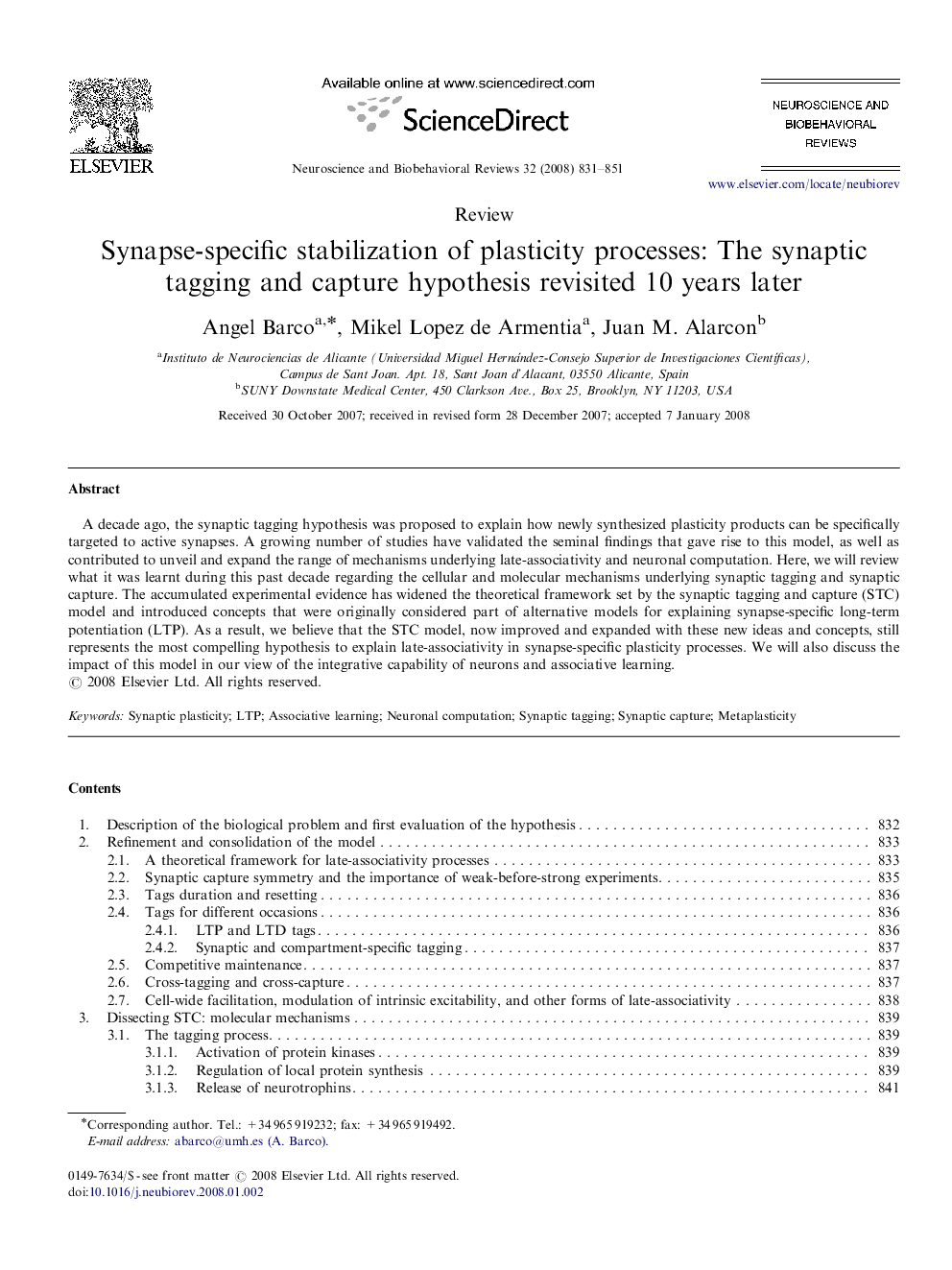| Article ID | Journal | Published Year | Pages | File Type |
|---|---|---|---|---|
| 938232 | Neuroscience & Biobehavioral Reviews | 2008 | 21 Pages |
A decade ago, the synaptic tagging hypothesis was proposed to explain how newly synthesized plasticity products can be specifically targeted to active synapses. A growing number of studies have validated the seminal findings that gave rise to this model, as well as contributed to unveil and expand the range of mechanisms underlying late-associativity and neuronal computation. Here, we will review what it was learnt during this past decade regarding the cellular and molecular mechanisms underlying synaptic tagging and synaptic capture. The accumulated experimental evidence has widened the theoretical framework set by the synaptic tagging and capture (STC) model and introduced concepts that were originally considered part of alternative models for explaining synapse-specific long-term potentiation (LTP). As a result, we believe that the STC model, now improved and expanded with these new ideas and concepts, still represents the most compelling hypothesis to explain late-associativity in synapse-specific plasticity processes. We will also discuss the impact of this model in our view of the integrative capability of neurons and associative learning.
